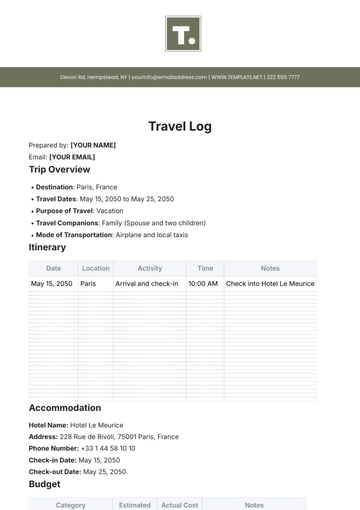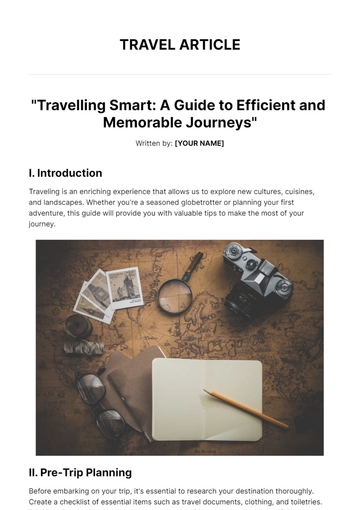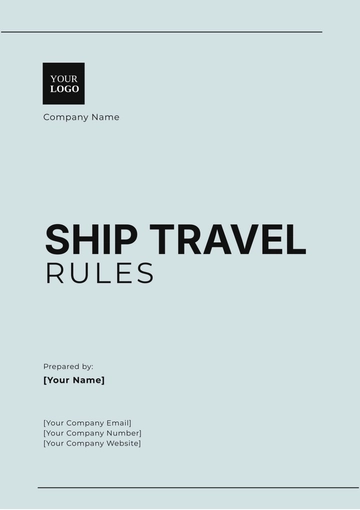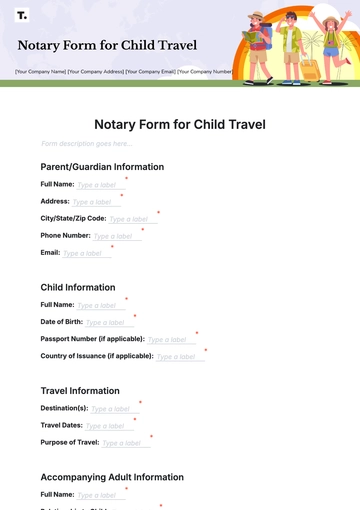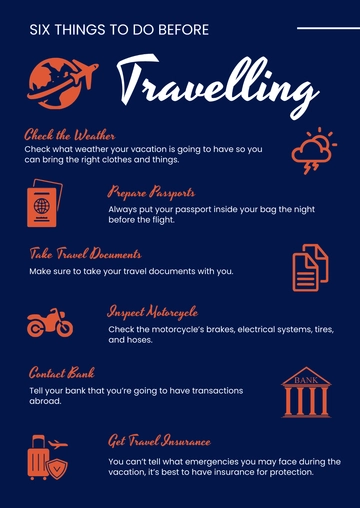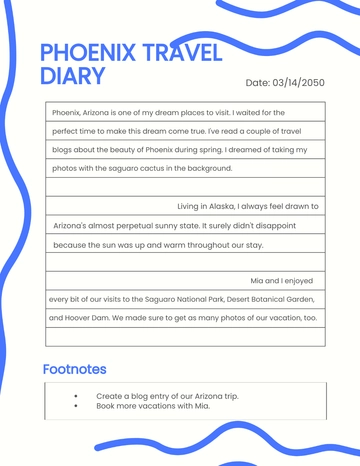Free Car Rental Customer Feedback Strategy

I. Introduction
This Customer Feedback Strategy of [Your Company Name] aims to create a structured and effective approach to gathering, analyzing, and utilizing customer feedback. Feedback from our customers is invaluable as it provides insights into their experiences, preferences, and areas where we can improve our services. By implementing this strategy, we ensure that customer feedback is systematically collected and integrated into our operations, leading to continuous service enhancements.
Our goal is to foster a customer-centric culture within [Your Company Name] where feedback is not only welcomed but actively sought. This strategy outlines the methods and processes we will use to engage with our customers, collect their feedback, and respond to their needs. We believe that by listening to our customers and acting on their feedback, we can build stronger relationships and improve customer loyalty.
This document will detail the specific components of our customer feedback strategy, including methods of collection, analysis, reporting, and actions based on the feedback received. This comprehensive approach will ensure that [Your Company Name] remains responsive to customer needs and committed to providing exceptional service.
II. Feedback Collection Methods
A. Surveys
Post-Rental Surveys: These surveys will be sent to customers within 24 hours after the rental period ends. The survey will cover various aspects of the rental experience, including vehicle condition, customer service, and overall satisfaction.
In-App Surveys: Customers using our mobile app will receive a prompt to complete a short survey after they return the vehicle. This quick and convenient method encourages immediate feedback.
Kiosk Surveys: Survey kiosks will be placed at all rental locations to allow customers to provide feedback on-site. This method captures feedback while the rental experience is still fresh in the customer’s mind.
Email Surveys: Periodic email surveys will be sent to our customer database to gather broader insights on customer preferences and experiences. This method reaches a wide audience and can provide comprehensive feedback.
QR Code Surveys: QR codes linking to surveys will be included on rental receipts and in-vehicle literature. This easy access method encourages customers to provide feedback at their convenience.
Collecting feedback through various methods ensures that we gather comprehensive insights from different customer segments. This multi-channel approach helps us identify and address issues promptly, improving overall customer satisfaction and service quality.
B. Social Media Monitoring
Identify Key Platforms: Focus on monitoring major social media platforms such as Facebook, Twitter, and Instagram where customers frequently share their experiences. Identifying key platforms allows us to target our monitoring efforts effectively.
Use Monitoring Tools: Implement social media monitoring tools to track mentions of [Your Company Name] and related keywords. These tools help automate the process and provide real-time alerts for customer feedback.
Engage with Customers: Respond promptly to both positive and negative comments to show that we value customer feedback. Engaging with customers publicly demonstrates our commitment to customer satisfaction.
Analyze Trends: Regularly analyze social media feedback to identify common themes and trends. This analysis helps us understand broader customer sentiment and areas needing improvement.
Social media monitoring is crucial for capturing real-time feedback and addressing customer concerns promptly. It also allows us to identify and respond to trends, ensuring we stay ahead of potential issues and continuously improve our service.
III. Data Analysis and Interpretation
A. Feedback Categorization
Identify Key Categories: Classify feedback into key categories such as vehicle condition, customer service, booking process, and pricing. This categorization helps in organizing the feedback for easier analysis.
Use Tagging System: Implement a tagging system to mark feedback with relevant keywords and themes. This system allows for efficient sorting and analysis of feedback data.
Regular Updates: Update the categories and tags regularly based on emerging trends and feedback. Keeping the system updated ensures that all relevant feedback is captured accurately.
Automated Tools: Utilize automated tools to assist in categorizing feedback. These tools can help process large volumes of feedback quickly and accurately.
Staff Training: Train staff on how to categorize feedback correctly to maintain consistency and accuracy. Proper training ensures that feedback is categorized uniformly across the board.
Categorizing feedback effectively enables us to focus on specific areas that need improvement. It also helps in tracking trends over time, allowing us to make data-driven decisions to enhance our services.
B. Quantitative Analysis
Feedback Scoring: Assign numerical scores to feedback to quantify customer satisfaction. This scoring system helps in easily comparing and tracking satisfaction levels over time.
Statistical Tools: Use statistical tools to analyze feedback data and identify significant trends and patterns. These tools provide deeper insights into customer behavior and preferences.
Benchmarking: Compare feedback scores with industry benchmarks to gauge our performance. Benchmarking helps us understand our position relative to competitors.
Regular Reports: Generate regular reports summarizing the quantitative analysis of feedback. These reports provide a clear overview of customer satisfaction trends.
Quantitative analysis provides objective data that can be used to make informed decisions. It helps in identifying specific areas that need attention and measuring the effectiveness of improvement initiatives.
C. Qualitative Analysis
The following table outlines the steps involved in conducting qualitative analysis on customer feedback:
No. | Step | Description |
|---|---|---|
1 | Data Collection | Gather all qualitative feedback from various sources. |
2 | Thematic Analysis | Identify recurring themes and patterns in the feedback. |
3 | Sentiment Analysis | Assess the emotional tone of the feedback to gauge customer sentiment. |
4 | Contextual Understanding | Understand the context behind the feedback to identify root causes. |
5 | Actionable Insights | Derive actionable insights from the analysis to drive improvements. |
Data Collection: Gathering all qualitative feedback from various sources ensures that we have a comprehensive dataset for analysis. This step is crucial for capturing the full range of customer opinions and experiences.
Thematic Analysis: Identifying recurring themes and patterns helps in understanding common issues and customer needs. This analysis provides a deeper insight into customer experiences and areas for improvement.
Sentiment Analysis: Assessing the emotional tone of the feedback allows us to gauge overall customer sentiment. Understanding whether feedback is positive, negative, or neutral helps prioritize areas needing attention.
Contextual Understanding: Understanding the context behind the feedback helps identify the root causes of issues. This step is essential for developing effective solutions to address customer concerns.
Actionable Insights: Deriving actionable insights from the analysis ensures that we can implement specific improvements. These insights help us translate feedback into concrete actions that enhance customer satisfaction.
Qualitative analysis provides a detailed understanding of customer experiences and sentiments. It helps in identifying specific issues and developing targeted solutions to improve service quality.
IV. Feedback Implementation
A. Action Plans
Develop Action Plans: Based on the feedback analysis, develop detailed action plans to address identified issues. These plans should outline specific steps and timelines for implementation.
Assign Responsibilities: Clearly assign responsibilities for each action item to ensure accountability. Designating specific staff members or teams ensures that actions are taken promptly.
Set Deadlines: Establish realistic deadlines for each action item to ensure timely implementation. Setting deadlines helps keep the implementation process on track.
Resource Allocation: Allocate necessary resources, including budget and personnel, to support the implementation of action plans. Ensuring adequate resources are available is crucial for successful implementation.
Monitor Progress: Regularly monitor the progress of action plans and make adjustments as needed. Continuous monitoring ensures that actions are completed effectively and any issues are addressed promptly.
Action plans are essential for systematically addressing customer feedback. They ensure that feedback is not just collected but also acted upon, leading to tangible improvements in service quality.
B. Continuous Improvement
Ongoing Feedback Loop: Establish an ongoing feedback loop to continuously gather and analyze customer feedback. This approach ensures that we are always aware of customer needs and preferences.
Regular Review Meetings: Hold regular review meetings with relevant teams to discuss feedback and progress on action plans. These meetings facilitate communication and collaboration.
Update Procedures: Regularly update procedures and policies based on feedback and the results of implemented actions. Keeping procedures up-to-date ensures they remain effective.
Training Programs: Implement training programs for staff to address any gaps identified through feedback. Continuous training helps maintain high service standards.
Continuous improvement is vital for maintaining and enhancing service quality. By regularly gathering feedback and updating our procedures, we can ensure that we meet and exceed customer expectations.
V. Customer Engagement
A. Loyalty Programs
Reward Positive Feedback: Implement a loyalty program that rewards customers for providing positive feedback. This encourages customers to share their positive experiences.
Incentivize Constructive Criticism: Offer incentives for constructive criticism to encourage honest feedback. This helps us identify areas for improvement.
Exclusive Offers: Provide exclusive offers and discounts to loyal customers as a thank you for their feedback. This builds customer loyalty and encourages repeat business.
Personalized Communication: Use customer feedback to personalize communication and offers. Tailoring interactions based on feedback enhances customer satisfaction.
Engaging customers through loyalty programs not only encourages feedback but also builds long-term relationships. It shows customers that their feedback is valued and leads to tangible benefits, promoting loyalty and satisfaction.
B. Customer Forums
Online Forums: Create online forums where customers can share their experiences and provide feedback. These forums offer a platform for open communication.
Moderate Discussions: Assign moderators to manage discussions and ensure they remain constructive. Moderation helps maintain a positive and productive environment.
Regular Q&A Sessions: Hold regular Q&A sessions with management to address customer concerns and gather feedback. These sessions provide direct communication between customers and management.
Feedback Summaries: Share summaries of forum feedback with the wider team to ensure everyone is aware of customer sentiments. This promotes transparency and collective action.
Customer forums are an effective way to engage with customers and gather valuable feedback. They provide a platform for open communication and direct interaction, fostering a sense of community and partnership.
VI. Technology Integration
A. CRM Systems
The following table outlines the benefits of integrating Customer Relationship Management (CRM) systems into our feedback strategy:
No. | Benefit | Description |
|---|---|---|
1 | Centralized Data | All customer feedback is stored in a single, accessible location. |
2 | Automated Analysis | CRM systems can automatically analyze feedback and generate reports. |
3 | Improved Tracking | Track customer interactions and feedback over time. |
4 | Personalized Service | Use feedback data to personalize customer interactions and service. |
5 | Enhanced Communication | Streamline communication with customers through integrated channels. |
Centralized Data: Storing all customer feedback in a centralized CRM system ensures that data is easily accessible and manageable. This centralization simplifies data analysis and reporting.
Automated Analysis: CRM systems can automatically analyze feedback and generate detailed reports. Automation saves time and ensures consistent and accurate analysis.
Improved Tracking: Tracking customer interactions and feedback over time helps us understand customer behavior and preferences. This tracking enables us to provide more personalized and effective service.
Personalized Service: Using feedback data to personalize customer interactions enhances the overall customer experience. Personalization shows customers that we value their preferences and needs.
Enhanced Communication: CRM systems streamline communication with customers through integrated channels, making it easier to respond to feedback promptly. Enhanced communication ensures that customers feel heard and valued.
CRM systems are essential for efficiently managing and utilizing customer feedback. They streamline processes, enhance communication, and enable personalized service, ultimately improving customer satisfaction and loyalty.
B. Mobile Apps
Feedback Integration: Integrate feedback collection features directly into our mobile app. This integration makes it easy for customers to provide feedback on the go.
Push Notifications: Use push notifications to remind customers to provide feedback after their rental experience. Timely reminders help increase response rates.
User-Friendly Interface: Ensure the feedback feature has a user-friendly interface to encourage participation. A simple and intuitive design makes it easier for customers to share their thoughts.
Real-Time Feedback: Allow customers to provide real-time feedback during their rental experience. Real-time feedback helps us address issues immediately and improve the overall experience.
Mobile apps offer a convenient and effective platform for collecting customer feedback. They enable real-time feedback, timely reminders, and a user-friendly interface, making it easier for customers to share their experiences.
VII. Staff Involvement
A. Training Programs
Feedback Collection Training: Train staff on how to effectively collect and encourage customer feedback. Proper training ensures staff are equipped to gather valuable insights from customers.
Customer Service Training: Provide comprehensive customer service training to improve interactions with customers. Excellent customer service fosters positive feedback and loyalty.
Handling Negative Feedback: Equip staff with skills to handle negative feedback professionally and constructively. Proper handling of negative feedback can turn dissatisfied customers into loyal ones.
Continuous Improvement: Encourage a culture of continuous improvement through regular training and development programs. Ongoing training ensures staff remain knowledgeable and effective.
Staff training is essential for effective feedback collection and customer service. It ensures that staff are equipped to gather valuable insights and handle feedback constructively, promoting customer satisfaction and loyalty.
B. Incentive Programs
Reward Positive Performance: Implement incentive programs to reward staff who receive positive feedback from customers. Recognizing excellent performance motivates staff to maintain high service standards.
Encourage Feedback Collection: Offer incentives for staff who actively encourage customers to provide feedback. This encourages staff to prioritize feedback collection as part of their routine.
Team-Based Rewards: Provide team-based rewards for achieving high customer satisfaction scores. Team-based incentives promote collaboration and collective responsibility for customer satisfaction.
Performance Metrics: Include feedback-related metrics in staff performance evaluations. Incorporating feedback metrics ensures that staff understand the importance of customer feedback in their roles.
Celebrate Successes: Regularly celebrate successes and positive feedback to boost morale and motivation. Celebrating achievements reinforces the value of excellent customer service.
Incentive programs are an effective way to motivate staff and promote a customer-centric culture. They encourage staff to prioritize feedback collection and maintain high service standards, ultimately improving customer satisfaction.
VIII. Reporting and Review
A. Regular Reporting
The following table outlines the components of our regular feedback reporting:
No. | Component | Description |
|---|---|---|
1 | Weekly Reports | Summarize feedback and key trends on a weekly basis. |
2 | Monthly Reports | Provide a more detailed analysis of feedback and performance metrics. |
3 | Quarterly Reviews | Conduct comprehensive reviews of feedback data and action plans. |
4 | Annual Summary | Summarize the year’s feedback trends and overall performance. |
5 | Real-Time Dashboards | Provide live updates and insights from ongoing feedback collection. |
Weekly Reports: Summarizing feedback and key trends on a weekly basis helps us stay updated on customer sentiment and address issues promptly. These reports provide a quick overview of recent feedback and immediate areas needing attention.
Monthly Reports: Providing a more detailed analysis of feedback and performance metrics on a monthly basis allows us to track progress and identify longer-term trends. These reports help in making informed decisions and adjustments.
Quarterly Reviews: Conducting comprehensive reviews of feedback data and action plans every quarter ensures that we assess our strategies and make necessary improvements. These reviews provide an opportunity to reflect on our progress and refine our approach.
Annual Summary: Summarizing the year’s feedback trends and overall performance gives us a clear picture of our achievements and areas for improvement. This summary helps in strategic planning and setting goals for the next year.
Real-Time Dashboards: Providing live updates and insights from ongoing feedback collection ensures that we can respond to issues as they arise. Real-time dashboards offer immediate visibility into customer sentiment and feedback trends.
Consistent and comprehensive reporting is crucial for maintaining a customer-centric approach. It ensures that feedback is systematically analyzed and used to drive continuous improvement in our services.
B. Review Meetings
Monthly Review Meetings: Hold monthly meetings with relevant teams to discuss feedback reports and progress on action plans. These meetings ensure that all teams are aligned and aware of feedback trends and actions.
Quarterly Strategy Sessions: Conduct quarterly strategy sessions to review feedback data and refine our customer service strategies. These sessions provide an opportunity for in-depth analysis and strategic planning.
Cross-Departmental Meetings: Organize cross-departmental meetings to discuss feedback that impacts multiple areas of the business. Collaboration across departments ensures a holistic approach to addressing feedback.
Customer Feedback Panels: Involve customer feedback panels in review meetings to provide direct insights and suggestions. Engaging customers in the review process ensures that their voices are heard and valued.
Review meetings are essential for aligning teams and ensuring a coordinated approach to customer feedback. They facilitate communication, collaboration, and strategic planning, helping us continuously improve our services.
IX. Conclusion
Implementing a comprehensive customer feedback strategy is essential for [Your Company Name] to continuously improve and deliver exceptional customer service. By systematically collecting, analyzing, and acting on feedback, we can identify areas for improvement, address issues promptly, and enhance overall customer satisfaction.
Regular reporting and review meetings ensure that feedback is continuously monitored and used to drive improvements. Engaging customers through various channels and involving them in the review process demonstrates our commitment to listening and responding to their needs. By fostering a culture of continuous improvement and maintaining a customer-centric approach, we can achieve our goal of providing the best possible rental experience.
- 100% Customizable, free editor
- Access 1 Million+ Templates, photo’s & graphics
- Download or share as a template
- Click and replace photos, graphics, text, backgrounds
- Resize, crop, AI write & more
- Access advanced editor
Enhance feedback processes with the Car Rental Customer Feedback Strategy Template! Available on Template.net, this template is customizable and its editable format allows for easy modifications to fit your business goals. The AI Editor Tool assists in creating a detailed and effective feedback strategy, promoting continuous improvement in customer service!

